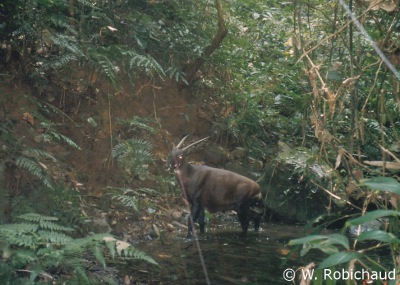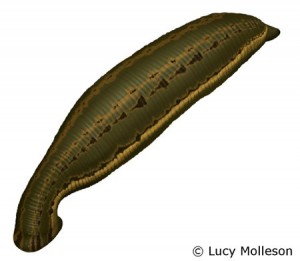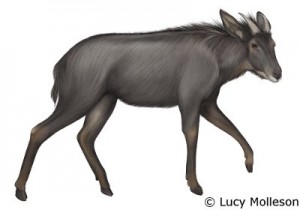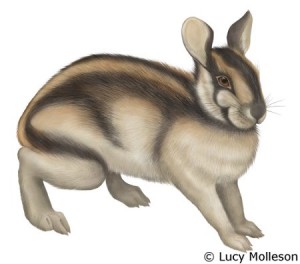The parasitic lifestyle that bloodsucking leeches lead hasn’t seemed to earn them any respect from human beings, until now. Research published last week has revealed that leeches can in fact store the DNA of their hosts for several months or even up to a year after feeding, and conservationists have jumped at the chance to use this knowledge to find rare and cryptic species in the tropics.

The saola antelope (Pseudoryx nghetinhensis) is one of the most elusive animals in the world: it was first described from horns in hunter’s houses in Vietnam in 1992, and since then has hardly ever been seen alive.
Known as the ‘Asian unicorn’ because of its rarity, the saola population may number in the tens today, restricted to forests in the Annamite Mountains between Vietnam and Lao PDR.
It is currently listed as Critically Endangered and has an EDGE rank of 44, giving it an extremely high priority for conservation actions.

A conventional method for finding saola in the dense jungle is motion-sensitive camera trapping, which is expensive and unreliable. Cameras get knocked over or taken, can have image transmission problems, and are stationary so if saolas don’t pass by in front of the lens then the animals aren’t detected. In addition, there are currently no established parameters to distinguish saola signs (such as tracks or dung) from other ungulates in the same range.
Now the search for the saola has taken a new turn that could prove much more efficient than camera trapping. One of the unpleasantries of carrying out jungle research is the abundance of leeches in the wet forest habitat of Laos and Vietnam. The new (and much cheaper) idea was to collect the parasites and actually sequence the DNA from the blood in their stomachs to see if there was any belonging to the saola, an easy method because of their readiness to attack humans.
Biologists from the Natural History Museum of Denmark and the University of Copenhagen, along with Saola Working Group member Nicholas Wilkinson, recently published the results obtained from analysing the stomach contents of 25 leeches that Nicholas collected in Vietnam. This time no saola blood was found, but remarkably 21 of the leeches retained mammalian DNA from unexpected species.


A few of the leeches contained standard pig and cow DNA (pigs are very common in the area and cows are used by locals to transport wood), but others had blood from the mainland serow (Capricornis maritimus), a goat-like animal listed as Near Threatened by the IUCN.

Six had fed on the Chinese ferret-badger (Melogale moschata), an important find as this species is impossible to tell from similar ferret-badgers. Four leeches contained Annamite stripped rabbit (Nesolagus timminsi) DNA, a species only discovered in the late 1990s and so cryptic that it is considered as Data Deficient, and the last leech had been attached to the Truong Son muntjac deer (Muntiacus truongsonensis), one of the smallest muntjacs and another Data Deficient species. This last observation is the first record of the Truong Son muntjac’s presence in the Saola Nature Reserve.

The researchers also say that aquatic leeches may also prove useful if investigated in the same way, and there is great potential for parasites to be used in a wider approach to map geographic ranges of the species they have preyed upon. The implications of this method for conservation may be revolutionary: with simple, inexpensive and non-expert sampling techniques it may prove to be the essential tool for the future of widespread biodiversity modelling.